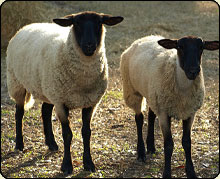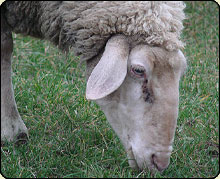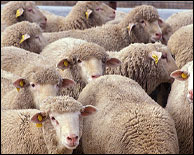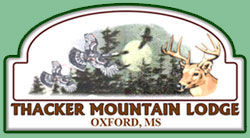|
Hunting, Recreational, Fishing, Investment Land For Sale in Mississippi, Delta, Ranch, Farm, Timber Land for Sale In Mississippi
|
Welcome
In the Delta, which is located on the Mississippi River, Thacker Mountain Land and Timber Division offers for sale Delta sheep Farms for Sale. These farms are commonly built up from river deposits when it flows into the Gulf of Mexico. Our sheep farms for sale are located in the delta whis is known as the Mississippi River Delta. Thacker Mountain Land and Timber Division has numerous sheep farms for sale and many Delta Farms for Sale. The Mississippi delta has been formed for many years and has made the Mississippi Delta valley region one of the best land masses in the world. We buy and sell Delta land.
|

 Sheep Diet
Sheep Diet
Sheep are exclusively herbivorous mammals. Like all ruminants, sheep have a complex digestive system composed of four chambers, allowing them to break down cellulose from stems, leaves, and seed hulls into simpler carbohydrates. When sheep graze, vegetation is chewed into a mass called a bolus, which is then passed into the first chamber: the rumen. The rumen is a 5- to 10-gallon (19–38 l) organ in which feed is fermented via a symbiotic relationship with the bacteria, protozoa, and yeasts of the gut flora.[24] The bolus is periodically regurgitated back to the mouth as cud for additional chewing and salivation.[24] Cud chewing is an adaptation allowing ruminants to graze more quickly in the morning, and then fully chew and digest feed later in the day.[25] This is beneficial as grazing, which requires lowering the head, leaves sheep vulnerable to predators, while cud chewing does not.
Sheep follow a diurnal pattern of activity, feeding from dawn to dusk, stopping sporadically to rest and chew their cud. Ideal pasture for sheep is not lawn-like grass, but an array of grasses, legumes and forbs.[27] Types of land where sheep are raised vary widely, from pastures that are seeded and improved intentionally to rough, native lands. Common plants toxic to sheep are present in most of the world, and include (but are not limited to) oak and acorns, tomato, yew, rhubarb, potato, and rhododendron.[28]
Thacker Mountain Lodge Land and Property Division offers Sheep acreage, Sheep farms, Mississippi Sheep farms, Delta Sheep farms, Mississippi Sheep farms for sale and Mississippi Delta Sheep farms for sale.
|

 Sheep Information
Sheep Information
Sheep are prey animals with a strong gregarious instinct, and a majority of sheep behaviors can be understood in these terms. The dominance hierarchy of Ovis aries and its natural inclination to follow a leader to new pastures were the pivotal factors in it being one of the first domesticated livestock species.[34] All sheep have a tendency to congregate close to other members of a flock, although this behavior varies with breed.[12] Farmers exploit this behavior to keep sheep together on unfenced pastures and to move them more easily. Shepherds may also use sheepdogs in this effort, whose highly bred herding ability can assist in moving flocks. Sheep are also extremely food-oriented, and association of humans with regular feeding often results in sheep soliciting people for food.[35] Those who are moving sheep may exploit this behavior by leading sheep with buckets of feed, rather than forcing their movements with herding.
|
 Thacker Mountain Lodge
Thacker Mountain Lodge
Thacker Mountain Lodge Land and Property Division offers Sheep acreage, Sheep farms, Mississippi Sheep farms, Delta Sheep farms, Mississippi Sheep farms for sale and Mississippi Delta Sheep farms for sale. Thacker Mountain Lodge also offers, for sale Premium Mississippi, Delta, and Mid-South, land, ranches, farms, investment, recreational, timberland, and commercial property located in the river delta. This area is referred to as the Mississippi River Sheep Delta area. Thacker Mountain Lodge Timber and land, Property division offers hunting and fishing property for sale. If your investment property group wants to buy mid-south hunting property, Mississippi hunting land for sale, Mississippi homes, Mississippi farms, Mississippi ranches and hunting property, Mississippi hunting property, mid-sized hunting property, or Mississippi recreational hunting property, Thacker Mountain Lodge Timber and land Property Division can help.
Call The Thacker Mountain Lodge Land and Timber Property Division today or email us at
properties@thackermountainlodge.com
|
|
|
Sheep Farms for Sale, Mississippi Sheep Farms, Mississippi Delta Sheep Farms, Sheep Farms
|
Domestic sheep ( Ovis aries) are quadrupedal, ruminant mammals typically kept as livestock. Like all ruminants, sheep are members of the order Artiodactyla, the even-toed ungulates. Although the name "sheep" applies to many species, in everyday usage it almost always refers to Ovis aries. Numbering a little over 1 billion, domestic sheep are the most numerous species in their genus.

|
|
|
Sheep are most likely descended from the wild mouflon of Europe and Asia. One of the earliest animals to be domesticated for agricultural purposes, sheep are raised for fleece, meat (lamb or mutton) and milk. A sheep's wool is the most widely used of any animal, and is usually harvested by shearing. Ovine meat is called lamb when from younger animals and mutton when from older ones. Sheep continue to be important for wool and meat today, and are also occasionally raised for pelts, as dairy animals, or as model organisms for science.
|
|

|
Need Mississippi hunting leases, mid-south hunting and fishing spots, Mississippi real estate, homes, farms, ranches, and Mississippi deer hunting, deer hunting land for sale in Mississippi, Thacker Mountain Lodge land and timber property division can supply what you need.
|
|
|

 Description Description
Domestic sheep are relatively small ruminants, usually with a crimped hair called wool and often with horns forming a lateral spiral. Domestic sheep differ from their wild relatives and ancestors in several respects, having become uniquely neotenic as a result of man's influence.[1][2] A few primitive breeds of sheep retain some of the characteristics of their wild cousins, such as short tails. Depending on breed, domestic sheep may have no horns at all (polled), or horns in both sexes (as in wild sheep), or in males only. Most horned breeds have a single pair, but a few breeds may have several.[3]
Another trait unique to domestic sheep (as compared to wild ovines, not other livestock) are their wide variation in color. Wild sheep are largely variations of brown hues, and variation with species is extremely limited. Colors of domestic sheep range from pure white to dark chocolate brown and even spotted or piebald.[4][5] Selection for easily dyeable white fleeces began early in sheep domestication, and as white wool is a dominant trait it spread quickly. However, colored sheep do appear in many modern breeds, and may even appear as a recessive trait in white flocks.[4][5] While white wool is desirable for large commercial markets, there is a niche market for colored fleeces, mostly for handspinning.[6] The nature of the fleece varies widely among the breeds, from dense and highly crimped, to long and hair-like. There is variation of wool type and quality even among members of the same flock, so wool classing is a step in the commercial processing of the fiber.
Depending on breed, sheep show a range of heights and weights. Their rate of growth and mature weight is a heritable trait that is often selected for in breeding.[7] Ewes typically weigh between 100 and 225 pounds (45 and 100 kg), and the rams between 100 and 350 pounds (45 and 160 kg).[8] Mature sheep have 32 teeth (dental formula: either I:0/4 C:0/0 P:3/3 M:3/3 or I:0/3 C:0/1 P:3/3 M:3/3[9]). As with other ruminants, the eight incisors are in the lower jaw and bite against a hard, toothless pad in the upper jaw; picking off vegetation. There are no canines, instead there is a large gap between the incisors and the premolars. Until the age of four (when all the adult teeth have erupted), it is possible to see the age of sheep from their front teeth, as a pair of incisors erupts each year.
The front teeth are gradually lost as sheep age, making it harder for them to feed and hindering the health and productivity of the animal. For this reason, domestic sheep on normal pasture begin to slowly decline from four years on, and the average life expectancy of a sheep is 10 to 12 years, though some sheep may live as long as 20 years.
Sheep have good hearing, and are sensitive to noise when being handled.[12] Sheep have horizontal slit-shaped pupils, possessing excellent peripheral vision; with visual fields of approximately 270° to 320°, sheep can see behind themselves without turning their heads.[6][13] However, sheep have poor depth perception; shadows and dips in the ground may cause sheep to balk. In general, sheep have a tendency to move out of the dark and into well-lit areas, [14], and prefer to move uphill when disturbed. Sheep also have an excellent sense of smell, and, like all species of their genus, have scent glands just in front of the eyes, and interdigitally on the feet. The purpose of these glands is uncertain,[15] but those on the face may be used in breeding behaviors.[7] The interdigital glands might also be used in reproduction,[7] but alternative reasons, such as secretion of a waste product or a scent marker to help lost sheep find their flock, have also been proposed.[15]
Sheep and goats are closely related (both are in the subfamily Caprinae), and it can be difficult to distinguish them by their appearance. However, they are separate species, so hybrids rarely occur, and are always infertile. A hybrid of a ewe and a buck (a male goat) is called a sheep-goat hybrid, and is not to be confused with the genetic chimera called a geep. Visual differences between sheep and goats include the beard and divided upper lip unique to goats. Sheep tails also hang down, even when short or docked, while the short tails of goats are held upwards. Sheep breeds are also often naturally polled (either in both sexes or just in the female), while naturally polled goats are rare (though many are polled artificially). Males of the two species differ in that buck goats acquire a unique and strong odor during the rut, whereas rams do not.
Thacker Mountain Lodge Land and Property Division offers Sheep acreage, Sheep farms, Mississippi Sheep farms, Delta Sheep farms, Mississippi Sheep farms for sale and Mississippi Delta Sheep farms for sale.

|

Breeds
The domestic sheep is a multi-purpose animal, and the more than 200 breeds now in existence were created to serve these diverse purposes.[3][16] Some sources give a count of a thousand or more breeds, but these numbers cannot be verified.[6][11] Almost all sheep are classified as being best suited to furnishing a certain product: wool, meat, milk, hides, or a combination in a dual-purpose breed. Other features used when classifying sheep include face color (generally white or black), tail length, presence or lack of horns, and the topography for which the breed has been developed. This last point is especially stressed in the UK, where breeds are described as either upland (hill or mountain) or lowland breeds.[14] A sheep may also be of a fat-tailed type, which is a dual-purpose sheep common in Africa and Asia with larger deposits of fat within and around its tail.
Breeds are also grouped based on how well they are suited to producing a certain type of breeding stock. Generally, sheep are thought to be either "ewe breeds" or "ram breeds". Ewe breeds are those that are hardy, and have good reproductive and mothering capabilities – they are for replacing breeding ewes in standing flocks. Ram breeds are selected for rapid growth and carcase quality, and are mated with ewe breeds to produce meat lambs. Lowland and upland breeds are also crossed in this fashion, with the hardy hill ewes crossed with larger, fast-growing lowland rams to produce ewes called mules, which can then be crossed with meat-type rams to produce prime market lambs.[14] Many breeds, especially rare or primitive ones, fall into no clear category.
Breeds are categorized by the type of their wool. Fine wool breeds are those that have wool of great crimp and density, which are preferred for textiles. Most of these were derived from Merino sheep, and the breed continues to dominate the world sheep industry. Downs breeds have wool between the extremes, and are typically fast-growing meat and ram breeds with dark faces.[17] Some major medium wool breeds, such as the Corriedale, are dual-purpose crosses of long and fine-wooled breeds and were created for high-production commercial flocks. Long wool breeds are the largest of sheep, with long wool and a slow rate of growth. Long wool sheep are most valued for crossbreeding to improve the attributes of other sheep types. For example: the American Columbia breed was developed by crossing Lincoln rams (a long wool breed) with fine-wooled Rambouillet ewes.
Coarse or carpet wool sheep are those with a medium to long length wool of characteristic coarseness. Breeds traditionally used for carpet wool show great variability, but the chief requirement is a wool that will not break down under heavy use (as would that of the finer breeds). As the demand for carpet-quality wool declines, some breeders of this type of sheep are attempting to use a few of these traditional breeds for alternative purposes. Others have always been primarily meat-class sheep.[18]
A minor class of sheep are the dairy breeds. Dual-purpose breeds that may primarily be meat or wool sheep are often used secondarily as milking animals, but there are a few breeds that are predominantly used for milking. These sheep do produce a higher quantity of milk and have slightly longer lactation curves.[19] In the quality of their milk, fat and protein content percentages of dairy sheep vary from non-dairy breeds but lactose content does not.[20]
A last group of sheep breeds is that of fur or hair sheep, which do not grow wool at all. Hair sheep are similar to the early domesticated sheep kept before woolly breeds were developed, and are raised for meat and pelts. Some modern breeds of hair sheep, such as the Dorper, result from crosses between wool and hair breeds. For meat and hide producers, hair sheep are cheaper to keep, as they do not need shearing.[18] Hair sheep are also more resistant to parasites and hot weather.[11]
With the modern rise of corporate agribusiness and the decline of localized family farms, many breeds of sheep are in danger of extinction. The Rare Breeds Survival Trust of the UK lists 22 native breeds as having only 3,000 registered animals (each), and the American Livestock Breeds Conservancy lists 14 as having fewer than 10,000.[21][22][23] Preferences for breeds with uniform characteristics and fast growth have pushed heritage (or heirloom) breeds to the margins of the sheep industry.[18] Those that remain are maintained through the efforts of conservation organizations, breed registries, and individual farmers dedicated to their preservation.
Thacker Mountain Lodge Land and Property Division offers Sheep acreage, Sheep farms, Mississippi Sheep farms, Delta Sheep farms, Mississippi Sheep farms for sale and Mississippi Delta Sheep farms for sale.

|
|
|
|